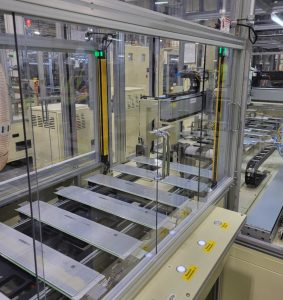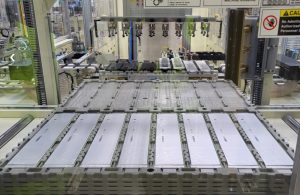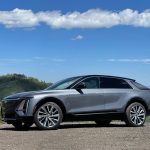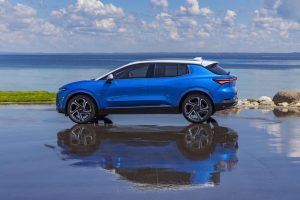Although it may be amending the pace at which it rolls out its newest electric vehicles, General Motors is making sure it will have the batteries needed to power them. It began shipping Ultium battery packs from its Tennessee plant this week.
GM’s not alone in its reconsideration of the rate of its conversion to electric vehicles; however, the need for batteries for electrified vehicles, i.e. hybrids, plug-in hybrids and battery electrics, isn’t abating. Charging ahead with its battery production plans, particularly its second Ultium plant is critical.
Ultium Cells, which is the joint venture between GM and LG Energy, will comprise three plants in the U.S. once complete.
However, there are just two sites in production now. The first is near Lordstown, Ohio, which has been operational for more than a year. The second is in Spring Hill, Tennessee, near the plant that produces the Cadillac Lyriq EV.
The first Spring Hill-produced cells shipped out March 21. They didn’t travel far, going to the aforementioned plant that builds the Lyriq.
Moving ahead

The Spring Hill site is in ramp-up mode, but will have 50 gigawatt-hours of capacity when running full out.
“This moment has been years in the making, and I’m grateful to the thousands of contractors, community partners and team members who have worked tirelessly to make this moment a reality,” Chris Desautels, the Spring Hill plant director, said in a statement to Automotive News.
The Spring Hill site is in ramp-up mode, but will have 50 gigawatt-hours of capacity when running full out. In all, GM is expected to invest more than $10 billion in battery production. The third site, which is under construction near Lansing, Michigan, is expected to begin producing cells by the end of this year.
The company’s fourth plant, which is a venture with Samsung SDI, is located in northern Indiana, with an expected start date of 2026.
More GM Stories
- GM Beats Internal Earnings Targets for 2023, Offering Dividend
- GM, Honda Begin Joint Production of Hydrogen Fuel Cells
- GM Will Cover Federal Tax Credits Lost by Some of its EVs This Year
EV plans
GM Chair Mary Barra said in December that she remains confident in the company’s plans to focus on electric vehicles remain firmly in place, albeit at a slower cadence.
While the company uses hybrid technology in China because that what the government requires, it does not plan on adding more hybrids to its product line in North America where GM remains committed to EVs.
Ultimately, the pace of EV adoption will be decided by customers, she said. But there are clear signs the number of consumers will consider EVs is growing. “I think we reached a tipping point in 2021,” said Barra, when more customers said they were willing to think seriously about purchasing an EV.








0 Comments